Oil majors! Working on global warming!
ConocoPhillips’ oil project in Alaska calls for inserting giant “chillers” into the melting permafrost, so the ground is stable enough to drill for oil.
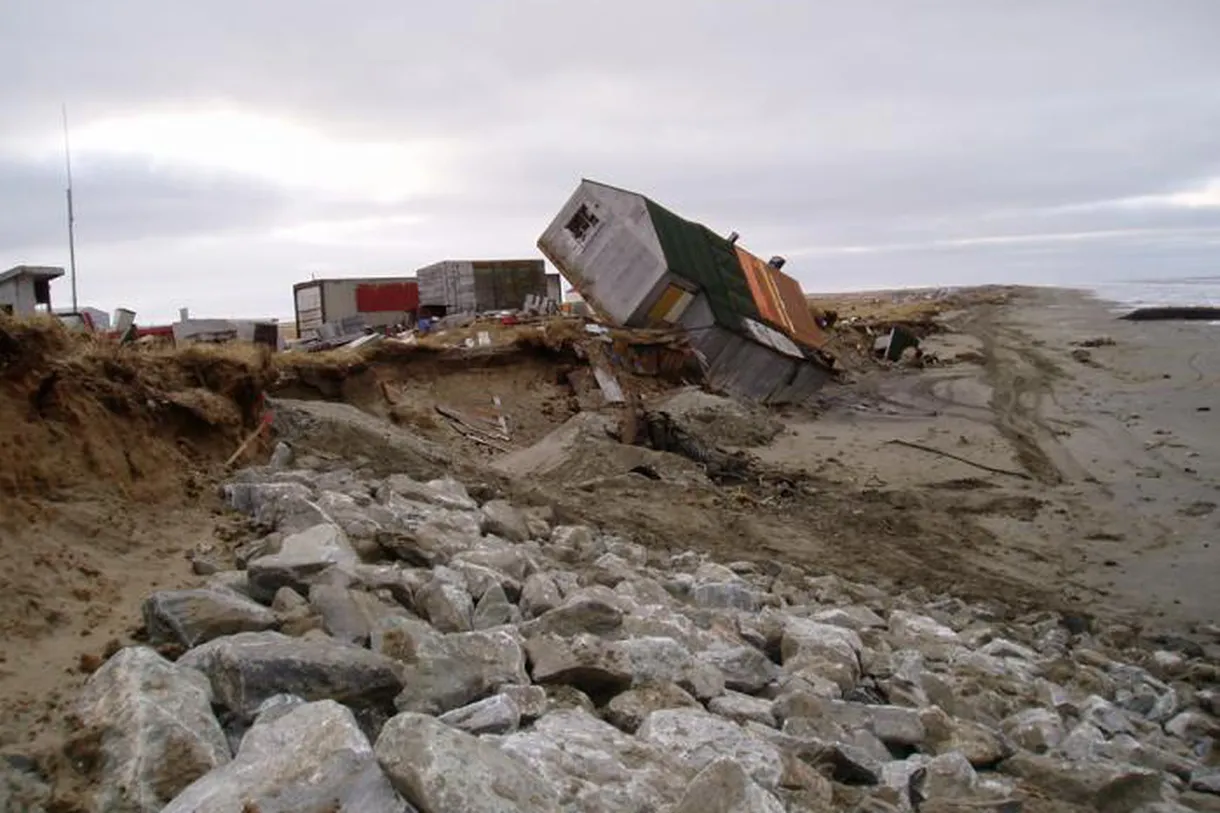
 Print This Post
Print This Post
ConocoPhillips’ oil project in Alaska calls for inserting giant “chillers” into the melting permafrost, so the ground is stable enough to drill for oil.

 Print This Post
Print This Post
Do you remember this article from a couple of years back? It was big in the media for a few days. Want to fight climate change? Have fewer children.
Having a child contributes some thirty times as much to warming the planet as the next closest action an individual can take: living without a car.
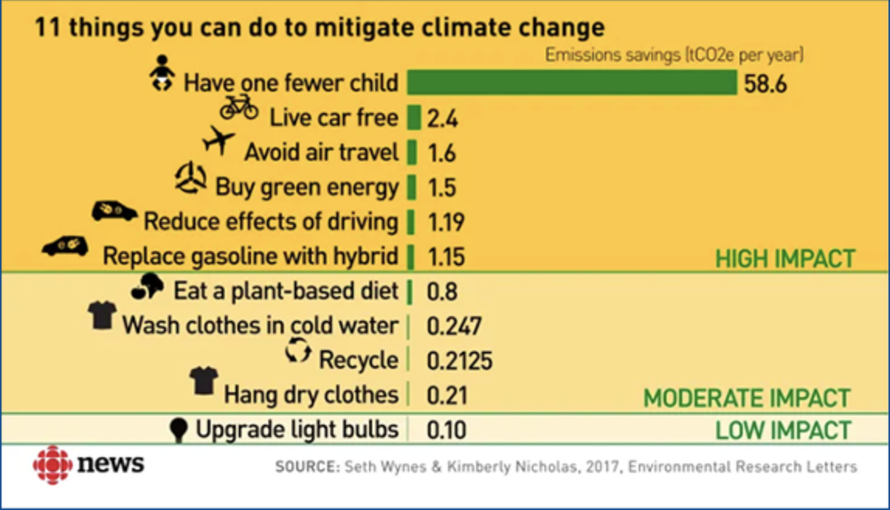
And yet, amidst all the discussion of air travel and bicycling and electric vehicles, there’s a ban on mentioning population control.
Another example I came across recently was in a very encouraging article about greening the Sahel in Africa.
… {Farmers had a] cheap, effective way to regreen the Sahel. They did so by using simple water harvesting techniques and protecting trees that emerged naturally on their farms.
Garrity recalls walking through farms in Niger, fields of grains like millet and sorghum stretching to the sun planted around trees, anywhere from a handful to 80 per acre. “In most cases, the trees are in random locations because they sprouted and the farmer protected them and let them grow,” he says. [Depending on species] [t]he trees can be cut for fuel… They can be pruned for livestock fodder. Their leaves and fruit are nutritious.
One tree, Faidherbia albida, goes dormant during the wet season when most trees grow. When the rains begin, the trees defoliate, dropping leaves that fertilize the soil. Because they have dropped their leaves, the trees do not shade crops during the growing season. Their value had long been recognized by farmers….
[But] “He laments that work is moving too slowly. With the Sahel’s population doubling in 20 years, Reij says regreening needs to be finished within 10 to 15 years.”
He makes it sound as if this doubling is a great force beyond human influence, like a solar storm or a meteor strike. It’s not. It’s merely human reproduction. We’re helpless only because the subject is so untouchable it can’t even be said out loud.
What’s up with that?.
I think the answer lies in the two possible trajectories to control births.
One is coercive. China’s one child policy is perhaps the most famous recent example. Since women are the ones giving birth, you have to control women. You punish them if they have too many children. You enforce abortions on mothers. Or, if you’re a Nazi in the 1930s who wants lots of blond babies and no browner ones, you try to enforce a eugenics program on women. You sterilize gypsies or the disabled or Jews while giving “your” women the option to be incubators or nothing.
All those methods involve hideously totalitarian pre-emption of individual choice and body autonomy (like the supporters of forced pregnancy, but we’re more used to them so it doesn’t feel as outlandish). But on the bright side, they don’t require any changes to misogynist and patriarchal social systems.
The other trajectory is to give women control over their own reproduction. Wherever that is done, birth rates drop dramatically. They may not fall all the way to replacement levels, but they get much closer than any other method. Giving women control works, it works sustainably and long term.
But.
But it deprives society of its main tool to control all aspects of women’s lives. Your reliable producers of the next generation, your unpaid domestic servants and nannies and handholders and caregivers, gradually find other things to do with their lives. Members of the upper caste might have to do their own dishes. Your whole system falls apart.
And therein lies the rub. All our current problems are made much worse by overpopulation. Dealing with that requires treating women like human beings. Which gives the patriarchy the vapors.
So suddenly respect for medieval religions and medieval cultures make it impossible to promote birth control. They might be offended!
There’s not the same action-limiting respect when it comes to things that serve the caste system. Porn is all over the place even though the Pope disapproves. But breastfeeding is too avantgarde for the delicate sensibilities of men on Facebook. Nor is there ever equivalent concern that women object to being erased.
The discrepancy has a name. Sady Doyle wrote about it almost three years ago, Trump, Putin, Assange, and the politics of sexism. Supposedly all three are exponents of radically different systems, and yet they have a lizard brain-level understanding that they’re on the same side. Her focus is social and political effects, but the same allergy to anything kind or well-meaning is everywhere.
Recently, reactionaries have made The Misogyny of Climate Deniers obvious by their revolting comments against a 16 year old who’s done nothing except use the full weight of all the evidence to disagree with them.
The connection has to do with a sense of group identity under threat, … both by developing gender equality—Hultman pointed specifically to the shock some men felt at the #MeToo movement—and now climate activism’s challenge to their way of life, male reactionaries motivated by right-wing nationalism, anti-feminism, and climate denialism increasingly overlap, the three reactions feeding off of one another. … Climate change used to be a bipartisan concern, the first Bush senior presidency famously promising to tackle global warming. But as conservative male mockery of Thunberg and others shows, climate politics has quickly become the next big battle in the culture war—on a global scale.
Misogyny isn’t the only motivation of reactionaries. There’s greed and garden variety hatred in there, too, but misogyny is the core. It’s misogyny, not greed or racism or ordinary hatred, that makes men fear weakness more than anything. And fear of weakness is what ties together the worst of what they do.
They think strong man governments are a good idea. They like guns and “defence” — war, really, so long as somebody else dies in it. Peace is only tolerable “through strength.” The reactionaries are against anything that doesn’t shout big power. They like nukes because gigawatts! dangerous! The truth is that even building a new gigawatt nuke every two months from 2010 till 2050 would solve only a small part of climate change and energy needs. Meanwhile renewables could provide all our energy by 2050 for a fraction of the cost and without radioactive waste. But distributed power, whether that’s rooftop solar or real democracy, strikes reactionaries as la-la limp-wristed hippie crap. Likewise, restraint against environmental destruction is pathetic weakness in the face of hard choices.
And weakness is the worst thing you can show. They (“They”) come and take your man card away. It’s the only thing that gave you any standing and it’s gone.
That is a future so horrible it’s worth burning the world down to avoid it. It must never be spoken lest saying its name calls it forth.
 Print This Post
Print This Post
Let’s talk about bitcoin. This was brought on by the news that the hunt for bitcoins is using as much energy as the entire country of Ireland now. And, at the current rate of growth one possible trajectory has it using all the world’s energy by 2021.
Which it won’t do, of course. People are going to insist on having a little bit of heat to cook and stay warm, but it does tell you how crazy the bitcoin path currently is.
What is bitcoin? The idea behind it is to have a cash equivalent when financial transactions are increasingly electronic. There is a value to having anonymous, untraceable money, just as there is value in anonymous, untraceable speech. It makes it harder for anyone to grab control over people. The downside, of course, is that it also makes it easier for criminals and hatemongers to do their thing.
Without going into the computerese of it all, you’re using processing power to do the calculations necessary to keep a transaction both secure and untraceable. (Although there’s some dispute about the perfection of the untraceability of it in all cases.) Secure untraceable transactions could actually be very useful in the case of, for instance digital voting.
A couple of points about bitcoin: there is a finite number of bitcoins allowed by the bitcoin system. I think the idea was that this was necessary for it to retain any kind of value. Obviously, if you can just “print” infinite numbers of bitcoins, they’re meaningless. It’s the same characteristic that makes gold valuable. There’s just so much of it and no more.
The second thing is that the closer you get to that limit, the more processing you have to do to get the computer to say it’s produced a secure untraceable transaction, a bitcoin. Producing a single bitcoin now takes as much energy as a US household uses in a month, very approximately. When this folderol started, I could have generated a hundred of them on my little laptop in minutes.
What is money? To understand what bitcoin actually is, I think it’s helpful to think about what money actually is. There’s a lot of dispute about the latter, so this is my view. (Which is right, of course. You at the back, pipe down.) It agrees with some of the Great Grandads of Economics (Keynes, for instance, unless I’ve totally misunderstood him), but not others.
At it’s most basic, money is a measure of value that allows us to exchange things that have real value — cabbages and houses and medical services and classes in Japanese flower arranging — without having to use barter. Barter isn’t bad, it’s just terribly inefficient. It depends on the buyer happening to have whatever the seller wants in exchange, and then both agreeing how much of A, say 5 cabbages, is worth how much of B, say on class on flowers. (And then, if you’re the teacher, what are you going to do with the 50 cabbages your students have given you?)
If money is a measure, then someone has to define what it’s measuring. With feet and meters that’s not a problem because we all know how and where to use yardsticks. But measuring value is a whole different ballgame.
There are fleets of economists who work on that sort of thing. And they can actually get reasonably close to what a given economy is producing. Money, at its best, then measures that and makes it easy to exchange things at sensible prices.
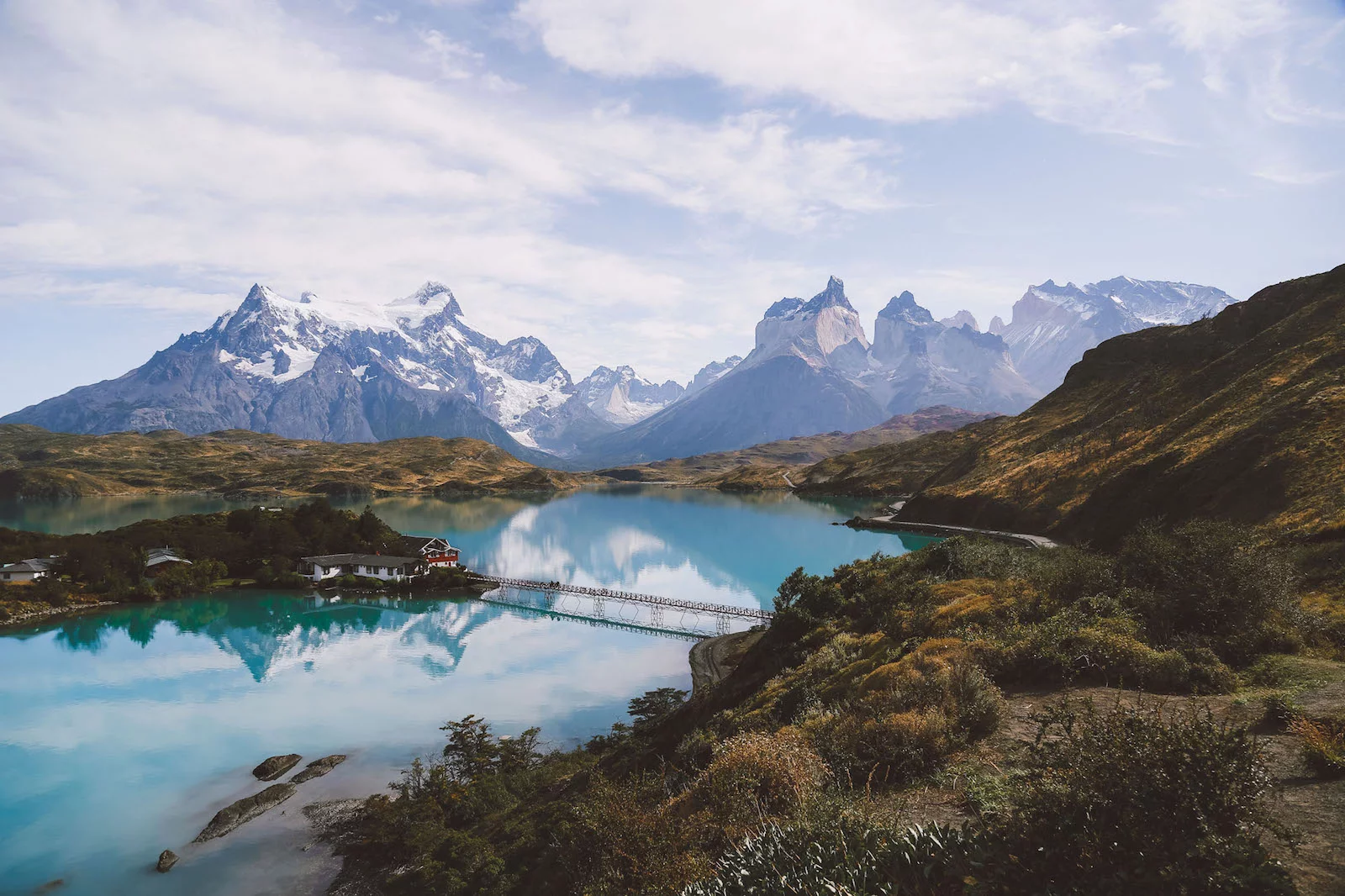
The trouble comes in because money is also used as a store of value. You can put it in the bank and use your “rulers” of value later to buy things you need. People tend to confuse the storage function with the measuring function, even though storing value has to be (very) secondary to how money works. If not, you get the absurdity of people storing all the rulers, which are useless in themselves, and grinding the economy to a halt. In the case of real yardsticks, nobody would be able to make clothes or build houses or bridges or do anything else that requires measurement. In the case of money, too many people don’t have enough to keep the economy turning and depressions happen.
That is why countries abandoned the gold standard. There’s a finite amount of gold. What happens when you invent steam engines and telephones and computers? You get into the stupid situation of not having enough gold to measure all that. (Or the even stupider situation of making a unit of gold near-priceless and bestowing vast wealth on people who happen to hold gold. Needless to say, the holders of gold preferred this alternative.)
So countries have gone to a system where the money supply is supposed to reflect the size of the economy.
What does this mean for bitcoin? You see where this is headed. Bitcoin explicitly measures nothing. Its whole function is to store some-kind-of-value but it’s finite. So, like gold, it cannot reflect changes to the underlying economy.
It has no means of defining value. No fleets of economists. The whole principle is “stuff costs what any fool will pay for it.” That does not work for a real economy and just gives all the “rulers” to the people who already have them.
And, finally, it has no means of enforcing legal trade. If someone rips you off, there’s zero recourse. As a subset of the lack of enforcement, it also facilitates extremely sketchy trading, such as trafficking, pedophilia, and counterfeit medicines. Much as I might like to stop the GOOG and everybody else from spying on my every purchase of deodorant, I don’t think facilitating pedophiles is an acceptable price to pay. We could, you know, just have regulation that outlaws tracking.
So, in conclusion, this is where bitcoin stands. It’s a fun idea. The computer process involved could be useful in things like voting. It’s not money, because it does not measure value. It’s a digital analogy for gold: an arbitrary something people have decided to use instead of money. It could have been (and has been in the past) conch shells. It the future it might be tobacco plants genetically engineered to grow stained glass leaves. You can’t base an economy on stuff like that.
An economy has to be based on actual value and money has to be something that measures that.
So bitcoin, and all the other cryptocurrencies, are not useful for the real economy and, as currently constituted, are using up so much energy that they’re cancelling out all the gains made by the shift to renewables.
You know what? That crap needs the shit regulated out it.
Crossposted also on Widdershins
 Print This Post
Print This Post
I don’t envy the IPCC. The International Panel on Climate Change studies looming calamity, and has to talk about it in polite, soft, encouraging tones. Otherwise they’re called “alarmist.” “Unrealistic.” Or (eeeek) “pessimists.”
So we’re facing flooding over coasts where billions of people live, people who won’t be able to farm any more so they and others will starve, people who will move to higher ground where nobody will want them and will try to push them out. We’re facing droughts and floods and freezes and fires due to climate forcing. We’re facing pests and diseases moving into new areas where there’s no resistance to them. We’re facing the triggering of feedback loops like the release of greenhouse gases from the formerly frozen Arctic and the release of methane from icy deposits on continental shelves. At that point we can push our puny human contribution down to zero and it won’t matter. The build-up will continue and there will be exactly nothing we can do about it. And that’s only the beginning of what we’re facing. Our grandchildren, your grandchildren, are the ones who’ll find out just what it is that we’ve done.
But God help you if you say that THIS IS A FREAKING DISASTER AND OUR LIVES DEPEND ON DEALING WITH IT.
That would be rude. And depressing. Unless you have something nice to say, don’t say anything at all. If you don’t have a solution, stop being a problem. Oh, and don’t tell us to change anything.
(That’s why it’s also rude to point out the real world evidence: we could be using 100% sustainable renewables by 2050(pdf) with less dislocation than the Great Recession. Or take it from the IPCC itself. Also a summary of options in 2011, before recent improvements.)
So the IPCC is doing its best. They’ve said, “Um. I hate to interrupt or anything but, uh, we really, really, really, really, really need to do something. But, ah, if that’s too harsh, you can also tell yourself you’ll try geoengineering.”
There aren’t enough swear words in the English language to do justice to the idiots who want that kind of “optimism.” As I said in one of my many earlier posts on this topic, we’ve been so good at controlling planetary processes, our best alternative is to mess with them.
 Print This Post
Print This Post
I can’t stop boggling about an article I just read in the NYTimes. Its gist is that how much we want to spend now to stop climate change depends on how much we think it’ll cost in the future. You guess about that part. And then you get super-precise about which interest rate you’ll accept on it.
Think of it this way: Demanding a 5 percent return means that a dollar invested today should become at least $1.05 next year after inflation, and a little more than $1.10 the year after that. In 200 years it should be worth at least $17,292.58. Turn the logic around and we should spend $1 today to prevent climate-related damage only if it prevents damages of at least $17,292.58 two centuries down the road.
[If a lower return is acceptable, at] 2.5 percent, spending $1 today would be justified if it prevented merely $139.56 worth of damage in 200 years.
I’m just floored. Sitting here, opening and closing my mouth like a fish out of water.
Are you telling me that people capable of putting on their own socks in the morning honestly think they can figure out all the expected and unexpected consequences of global warming? The costs of the water wars, the costs of cracked foundations due to drought, the costs of new pests, new molds, new diseases, the costs of acid oceans wiping out world fisheries, the cost of runaway feedback loops that dump more and more greenhouse gases into the air no matter what we puny humans do at that point. And that list barely scratches the surface of what will happen on a warming Earth.
But these beaks sit there and think they can make a fine and dandy accounting of the complete unknown? That their only problem is deciding which interest rate to slap on it?
What is wrong with these people?

 Print This Post
Print This Post
I shall watch his future progress with considerable interest. Seriously. No snark there at all.
Inventor Ronald Ace said that his flat-panel “Solar Traps,” which can be mounted on rooftops or used in electric power plants, will shatter decades-old scientific and technological barriers that have stymied efforts to make solar energy a cheap, clean and reliable alternative. …
His claimed discoveries, which exist only on paper so far, would represent such a leap forward that they are sure to draw deep skepticism from solar energy experts. But a recently retired congressional energy adviser, who has reviewed the invention’s still-secret design, said it’s “a no brainer” that the device would vastly outperform all other known solar technology. …
But John Darnell, a scientist and the former congressional aide who has monitored Ace’s dogged research for more than three years and has reviewed his complex calculations, has no doubts.“Anybody who is skilled in the art and understands what he’s proposing is going to have this dumbfounding reaction: ‘Oh, well it’s obvious it’ll work,’” said Darnell, a biochemist with an extensive background in thermodynamics. …
A major stumbling block for solar thermal energy devices invented to date has been that, as temperatures rise, increasing amounts of energy escapes, or radiates away, from their receivers. At 1,650 degrees Fahrenheit, currently designed receivers would radiate as much energy as they collect, sinking their efficiency to zero, solar experts say.
In his patent application, Ace wrote that his invention amounts to “a high-temperature blackbody absorber” that is “similar in some ways to an astronomical black hole.”
The key, he said, is his trap’s ability to absorb nearly 100 percent of the sunshine that hits it, while allowing only a tiny percentage of energy to escape, even at ultra-high temperatures.
Such a feat would astound many solar experts, who have had little success combating radiation losses in pilot solar plants, which use fields of mirrors to redirect and concentrate sunlight on common receivers.
 Print This Post
Print This Post
Even more so if it costs anyone who’s already comfortable.
From Krugman, this priceless proof They are always, always, trotting out the same claptrap. Spending anything for the common good is weak, namby-pamby, woolly-minded unwillingness to face hard choices.
[W]hat The Economist said, in 1848, about proposals for a London sewer system:
Suffering and evil are nature’s admonitions; they cannot be got rid of; and the impatient efforts of benevolence to banish them from the world by legislation, before benevolence has learned their object and their end, have always been more productive of evil than good.
Sewers are socialism!
It wasn’t until the Great Stink made the Houses of Parliament uninhabitable that the sewer system was created.
The sad thing is our modern Great Stinks and Great Warmings will be so bad by the time they reach our well-insulated elites that we’ll be neck-deep in the Big Muddy and there’ll be nothing to do but hope we float.
 Print This Post
Print This Post
In some ways, Hawaii has nice problems. The LATimes wants to know whether the rapid growth of solar power there is Too much of a good thing? “[P]ower generated by homeowners … exceeded output from power plants in some areas.”

Energy from the sun is the only kind which could give us more power than we know what to do with, even if we got our act together and grabbed as much as we could.
But in Hawaii’s particular case, the problem is due to the fact that the utilities literally don’t know what to do with it. They’ve been hanging onto old fossilized business models and haven’t upgraded their distribution and storage facilities to handle their real business. Which should be load balancing.
We’re always going to need public utilities to wheel the power to where it’s needed, to store the excess, to stop spikes and surges and brownouts.
Instead of acknowledging their stupid lack of planning, what does Hawaiian Electric do? “[P]roposed a moratorium on solar installations, a plan that met with immediate outrage and was quickly withdrawn. But utilities are requiring expensive “interconnection” studies[.]”
The studies are needed to prevent surges, but the company should be the one paying since its lack of planning caused the problem. Instead, it’s doing everything it can to slow down energy independence.
Happily, they haven’t been as successful as they’d like. Yet, anyway.
The state has set a goal of obtaining 40% of its power from locally generated renewable sources by 2030. Already, the Big Island has jumped ahead and is producing 44% of its power from renewable sources, and it could hit 100% by the end of the decade.
Kauai announced earlier this month that it would build its third large-scale solar plant and expected to generate half the island’s power by the sun soon.
Go Hawaii!
 Print This Post
Print This Post
The interior of Southern California has been slow-roasting, like everybody else in the U. S. of A. It’s so bad, people are being told to use their A/C less, to let their houses go all the way up to 78°F (25°C). The utilities have been moaning about having barely enough power to meet needs
They’ve been bewailing the temporary shutdown of the San Onofre nuke like the loss of the last drop of drinking water. (The thing has cracks in hundreds of steam pipes due to design flaws.) It provides 2200 Megawatts. It’s loss is terrible. We’re all dying out here.
A complete load of horsefeathers. I live near two natural gas power stations, and they’re barely ever even on. If it’s as bad as all that, you’d think they’d have to use them, yes? One produces 560 Megawatts, the other 1516MW. But they don’t. Especially the 1516MW one. If I see it running two days out of the year, that’s a lot. Admittedly, I don’t spend my life staring at it, so I might miss a day or two, but not much more than that. The other one seems to run maybe 14 days out of the year.
Then, yesterday I went for a hike and saw this:
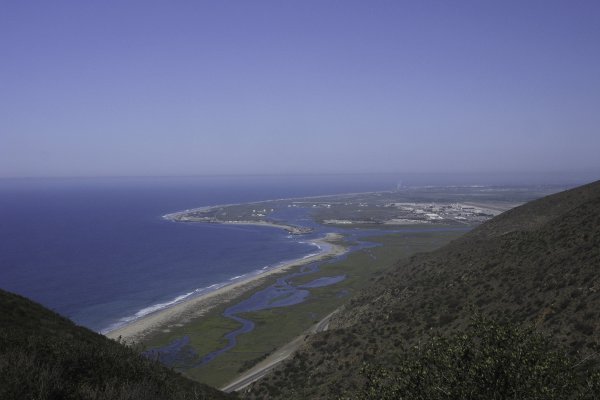
Nice, you say? What are you complaining about, you say? Well, look at those two wisps coming out of the two power plants. They’re running! They’re producing power!
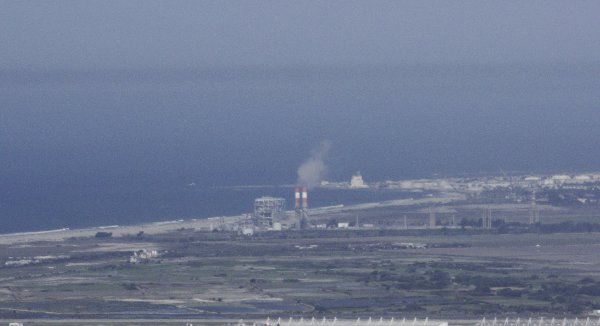
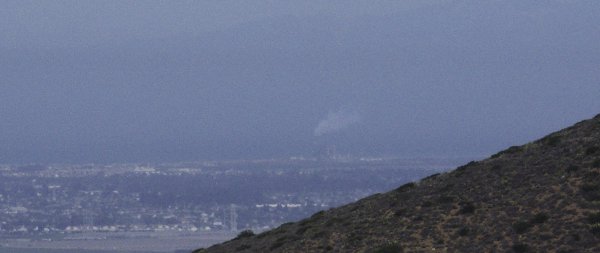
The neat thing about natural gas plants is the utlities get pollution credits for them because they’re so (relatively) clean. So — this is just a wild guess — by not running them, they can use those credits for dirtier plants of theirs. Or sell them to other needy utilities.
Meanwhile, they can weep and wail and gnash their teeth over how we must turn the nukes back on now now now! Or else we might have to turn the A/C all the way to 79°F.
 Print This Post
Print This Post
Remember the folks who said warming wasn’t a problem because plants use more CO2 when it’s hot?

How’s that working out for you?
 Print This Post
Print This Post
So this is not actually good news:
The Fukushima nuclear disaster was the result of “man-made” failures before and after last year’s earthquake, according to a report from an independent parliamentary investigation.
A technical glitch, an unforeseen cascade of technical glitches, an accident exceeding design parameters, all those things can be dealt with, assuming money is no object.
But even if money can be spent like water (and if you have to, why use nukes to begin with when there are cheaper, better, cleaner alternatives?), but if you can spend no end of money, you still can never fix the fallibility of human beings.
We will always make mistakes.
It’s therefore insane to depend on a technology that must have perfection or else it kills us.
It’s unspeakably more insane when there are cheaper, healthier, and more effective alternatives out there. You don’t have to take my word for it. The evidence just keeps piling up (pdf).
 Print This Post
Print This Post

A sod farm grows lawns for people who can’t be bothered with the whole grass-seed-and-careful-watering effort. It takes tons of fossil fuel. It takes huge quantities of water. You see farmworkers carefully moving the irrigation pipes every few days so that none of the sod gets marred by having a pipe on it too long.
You also see farmworkers walking the fields in formation, plastic bags on their belts, gently using a screwdriver-like tool to remove any weed trying to invade the living astroturf.
And, of course, the new grass has to be cut regularly for the sod to form a nice even carpet. More fossil fuel. Also, grass clippings. The clippings can’t be allowed to matt down. So they are vacuumed up.
We’re living in a world where it’s worth building huge wells drilling thousands of meters down to bring up ancient decomposed bacteria that are refined in enormous factories and then trucked everywhere while releasing their carbon to cook the planet so that fuel can be put into tractors to vacuum grass clippings.
Insanity.
 Print This Post
Print This Post
There’s a bit of a flap over Iran, nukes, Israel, the US, etc., etc., etc. Discussion of sanctions, unexpected strikes, war. In other words, no biggie.
But, this just in, as they say, from Reuters:
But Israel, in weighing military action, faces the risk of a backlash from Congress and the American public if oil prices spike during a still-fragile economic recovery ….
“It’s the law of unintended consequences,” said an outside expert who advises the White House on national security. “This could lead to the first real reassessment in a generation of how America and Americans feel about Israel.”
If gas prices go up, that’s different. That changes everything.
 Print This Post
Print This Post
Is not running out of oil.
This headline today is not good news: Does shale oil boom mean U.S. energy independence is near? Neither is this one that the US has a “200-year-supply” of coal. Nor these about all the fuel available in the Marcellus Shale, or the Canadian tar sands, or the Green River oil shale.
At this point it’s obvious to the meanest intelligence that burning fossil fuels adds greenhouse gases to the atmosphere, which causes climate change, which causes floods, fire, famine, pestilence, and war. It will kill billions of humans. I’ll repeat that. It will kill us. And I do mean “us.” Anybody who thinks they’ll be unaffected by the social consequences of global disasters is too dumb to last long in the hard new world. We are committing suicide.
We’re doing it right now. Not tomorrow. Not if things get worse. All we have to do is keep on doing what we’re doing.
Can I tell you a secret? Apparently, a lot of people don’t know this. Earth is the only planet we have.
Greenhouse gases are a gun pointed at our own heads. We have pulled the trigger.
But now comes the only good news: Planets work very slowly. The bullet has decades to travel. It’s already been traveling for about two centuries. Who knows how much more time we have? Probably minutes, but at least we’re not dead yet. If we did it very fast, we could move our heads out of the way.
Instead people write pleased headlines that more ways have been found to keep the bullet on track.
The whole species is headed for a Darwin Award. Except in this case it’ll be the planet whose survival is improved after we eliminate ourselves in an extraordinarily idiotic manner.
 Print This Post
Print This Post
I’ve said it before and I’ll say it again: solar energy and efficient use could solve all our energy problems. Nothing else can. And nuclear energy is worse than useless.
The intervening three years since the earlier posts have brought new technologies that make solar cheaper, faster, and better (1, 2, 3, 4, 5, 6, 7, 8, 9, 10, 11). They’ve brought more tragic proof that nukes can never be the answer (12, 13, 14, 15, 16). They’ve brought more data showing the worsening of climate change (17, 18, 19, 20, 21, 22, 23), the mushrooming of oil wars, and the hideous hidden price of fossil fuels.
Just a couple of examples:
Rooftop solar could supply around 780 GWh of energy every day, over 280TWh per year. That estimate does not include advances that allow window surfaces (11 above), roadways and parking lots (6 above), to be turned into photovoltaic generators. It uses restrictive assumptions for solar: only 4 hours useful sunlight per day, 15% efficiency of panels, and a very narrow definition of usable space. The whole southern half of the US, from California to Virginia, gets more like 6 usable hours of sunlight per day, and in the desert Southwest, it’s closer to 9 hours.
And then there’s the image below, showing that 55% of energy produced is lost before use. (“Rejected” energy in the graph.) That’s mainly heat loss during production and transmission losses, both of which are much, much, much, much lower in distributed sources close to the end-use point. (End use suffers from its own inefficiencies. Their elimination would reduce the need for power even more, but that’s a different topic.)

The years have also brought new calculations of transition costs and feasibility. The Stanford study by Jacobson and Delucchi (2011) shows just how straightforward it would be, technically and financially, to switch to a rational energy policy.
The only real hangup is that Big Oil and Big Nuke own the government.
 Print This Post
Print This Post
It’s insanity to try the same failed thing and expect a different outcome. So the pro-nuclear crowd seems to be trying a variant. They’re not crazy, calling nukes a success, because Fukushima’s reactors aren’t failures.
I’m seeing stuff like: “Oh, but it’s only in earthquake zones that nuclear can be a bit of a problem — and then only a teeny tiny one!” “Oh, stop bellyaching about radiation. There’s less of it than flying cross-country.” “Oh, yes, some of the fuel melted, but it was only a teeny tiny bit. And look! It didn’t turn into the worst disaster imaginable! Nuclear energy is a success!”
Um, how should I put this politely? If nuclear energy is so disaster-prone that an absence of catastrophic failure can be construed as success, then we really, really, really don’t want to use nuclear energy.
Anti-nuclear as I am, I would set the bar for success higher than that. If everything goes right, nukes can produce energy for a few decades without blowing up. It’s also true that if everything goes right, little radiation escapes.
If everything goes right.
Reactors are hugely complex technology with hundreds of potential failure points. Whether it’s an earthquake, tsunami, hurricane, rust, power failure, human error, terrorist smuggling, or poor interface design — there are hundreds of different cascades of events that can destroy multiply redundant backup systems and end in disaster. What will fail in any given case will be different.
The important issue is not whether there could be an earthquake here or an erroring human being there. The important issue is that such a hugely complex system has hundreds of ways to fail. It can never be safe.
Sometimes, when there’s no other way to do something vital or fascinating, it’s worth doing despite the risk. The space program is one example.
Nuclear energy, on the other hand, is an expensive way to run vast risks that are totally unnecessary.
There’s an expanded list of the points below, but here’s the summary. ■ Useful uranium stocks will run out about the same time as or shortly after oil. ■ The plants take so long to build, it’s physically impossible for them to be an actual solution to energy shortages. ■ They will, however, provide a waste problem forever.
These things are all facts of the simple, do-the-math variety. Uranium is finite. Plants take ±five years to build. Half-lives of radioactive elements are known to the femtosecond.
And then comes the biggest fact of all: NUCLEAR ENERGY IS NOT OUR ONLY CHOICE.
For 2% of global GDP (pdf) we could switch over, by 2050 (pdf), to efficiency, solar, wind, and other sustainable, renewable, and clean energies. And that’s for ALL our energy needs. (Nuclear, in contrast, has no realistic chance of even maintaining it’s current contribution, as you can see in the details below.)
Two percent of your income, if you make a median per capita US income of about $24,000, is $480. That’s less than many people in the US spend on phone bills.
For less than the yearly cost of a phone, we could have a world that’s not going to hell in a handbasket. So the choice is obvious, right?
Let’s all pile into the handbasket.
If you’re like me, you boggle that anyone supports a total loser proposition like nuclear power. What is wrong with these people? Are they nuts?
Well, yes and no. Remember that it costs some $10 billion to build a reactor. That gets paid to somebody. That somebody is getting that huge pile of money, risk-free, courtesy of taxpayers. What’s not to like?
The radioactivity? The waste? The unnecessary risks? The small amount of actual power produced? Somebody else’s problem. The billionaires pushing the boondoggle don’t plan to live downwind.
For the sake of raking in megabucks now, everybody else in time and space can be damned.
Is that insane?
Yes.
This repeats what I keep pointing out (1, 2, 3, 4, 5). Although newer information shows that nukes are more expensive than I’d read before, and the Stanford and UN studies linked above provide even more proof that a rational energy policy is both doable and affordable.
 Print This Post
Print This Post